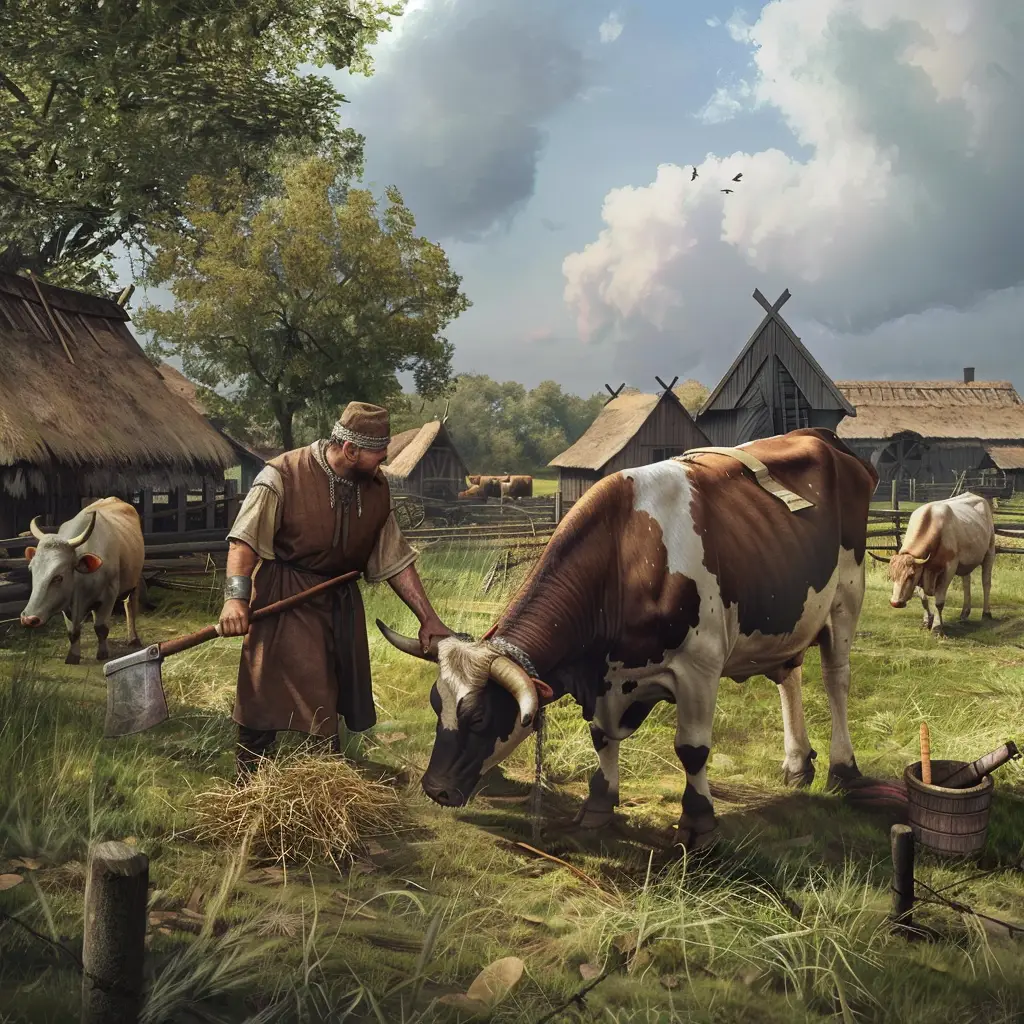Skyr, a traditional Icelandic dairy product, is often considered a type of yoghurt, although its texture and production method resemble cheese more closely. It was a staple in the Viking diet, providing a rich source of protein and nutrients. Here’s more about skyr and its role in Viking cuisine:
What is Skyr?
Consistency and Flavour:
Skyr is thick and creamy, similar to Greek yoghurt but even denser. It has a mild, slightly tangy flavour.
Nutritional Value:
Skyr is high in protein and low in fat, making it a nutritious part of the Viking diet. It’s also rich in calcium and other essential minerals.
Production Process
Ingredients:
Skyr is made from skimmed milk. Traditional methods involve heating the milk, adding a starter culture, and allowing it to ferment.
Fermentation:
The fermentation process uses specific bacterial cultures that give skyr its unique taste and texture. The milk is often heated and then cooled before the cultures are added.
Straining:
After fermentation, skyr is strained to remove the whey, resulting in its thick consistency. The whey byproduct was also consumed or used in other recipes.
Historical Context
Viking Age:
Skyr dates back to the Viking Age (circa 800-1100 AD). It was brought to Iceland by Norse settlers and became a staple food there due to its long shelf life and nutritional benefits.
Preservation:
Skyr could be stored for long periods, making it an ideal food for the harsh Icelandic climate and the Viking’s seafaring lifestyle. It was often preserved in wooden containers or barrels.
Culinary Uses
Eaten Plain:
Vikings likely ate skyr plain or mixed with water or milk to create a more drinkable consistency.
Sweetened or Savoury:
It could be sweetened with wild berries, honey, or other natural sweeteners. Alternatively, it might be eaten with savoury ingredients like onions or herbs.
Cooking:
Skyr was also used in cooking, particularly in recipes requiring a creamy texture.
Modern Skyr
Today, skyr is still a popular dairy product in Iceland and has gained international recognition for its health benefits and rich taste. It’s available in various flavours and is often compared to other types of strained yoghurt like Greek yoghurt.
Cultural Significance
Heritage:
Skyr is a significant part of Icelandic cultural heritage and represents the enduring culinary traditions of the Vikings.
Modern Adaptations:
While modern production methods have evolved, many Icelandic producers still adhere to traditional techniques to maintain the authentic flavour and quality of skyr.
Skyr is a fascinating example of how ancient food practices have endured through the centuries, continuing to provide both nutritional value and a connection to the past.


